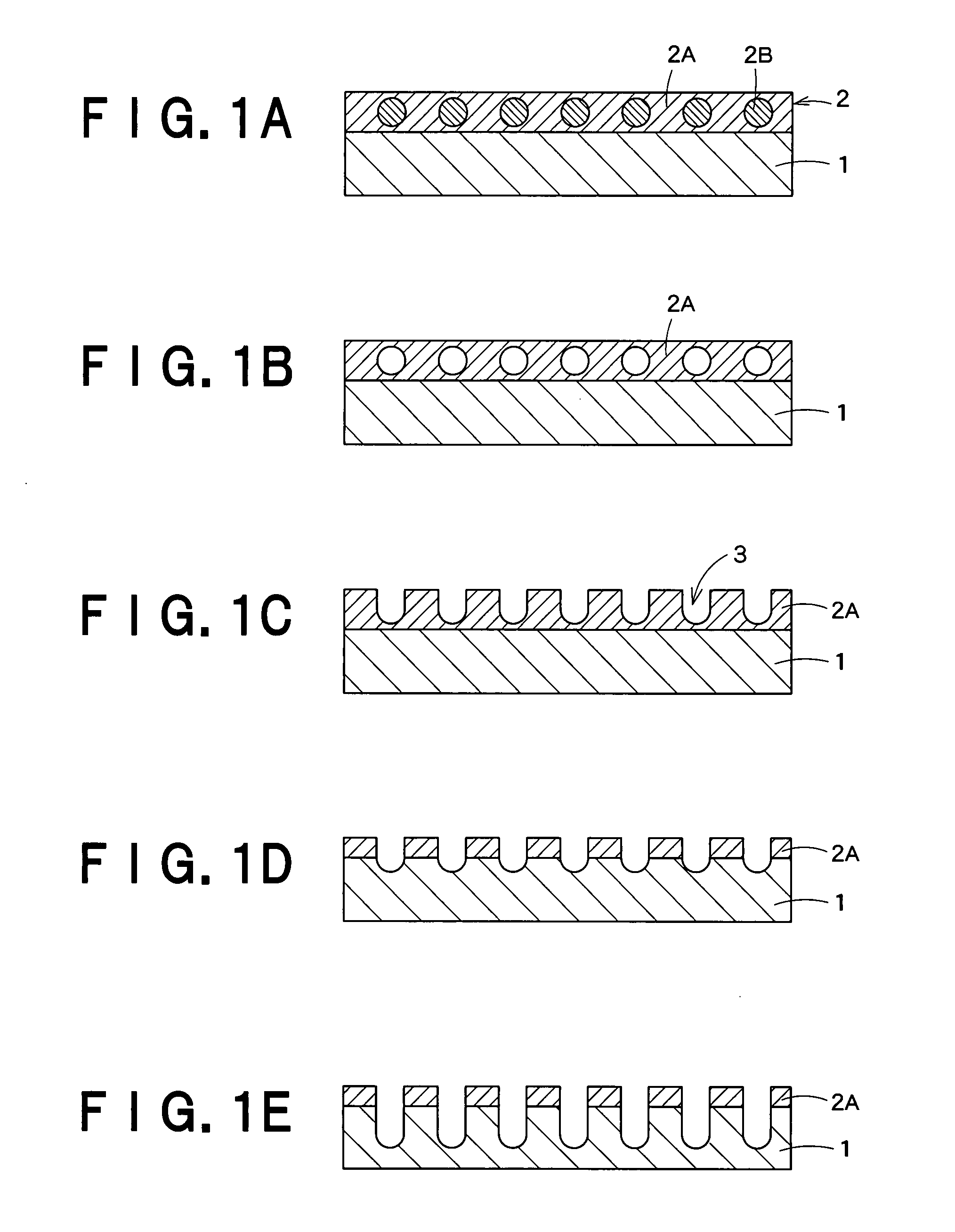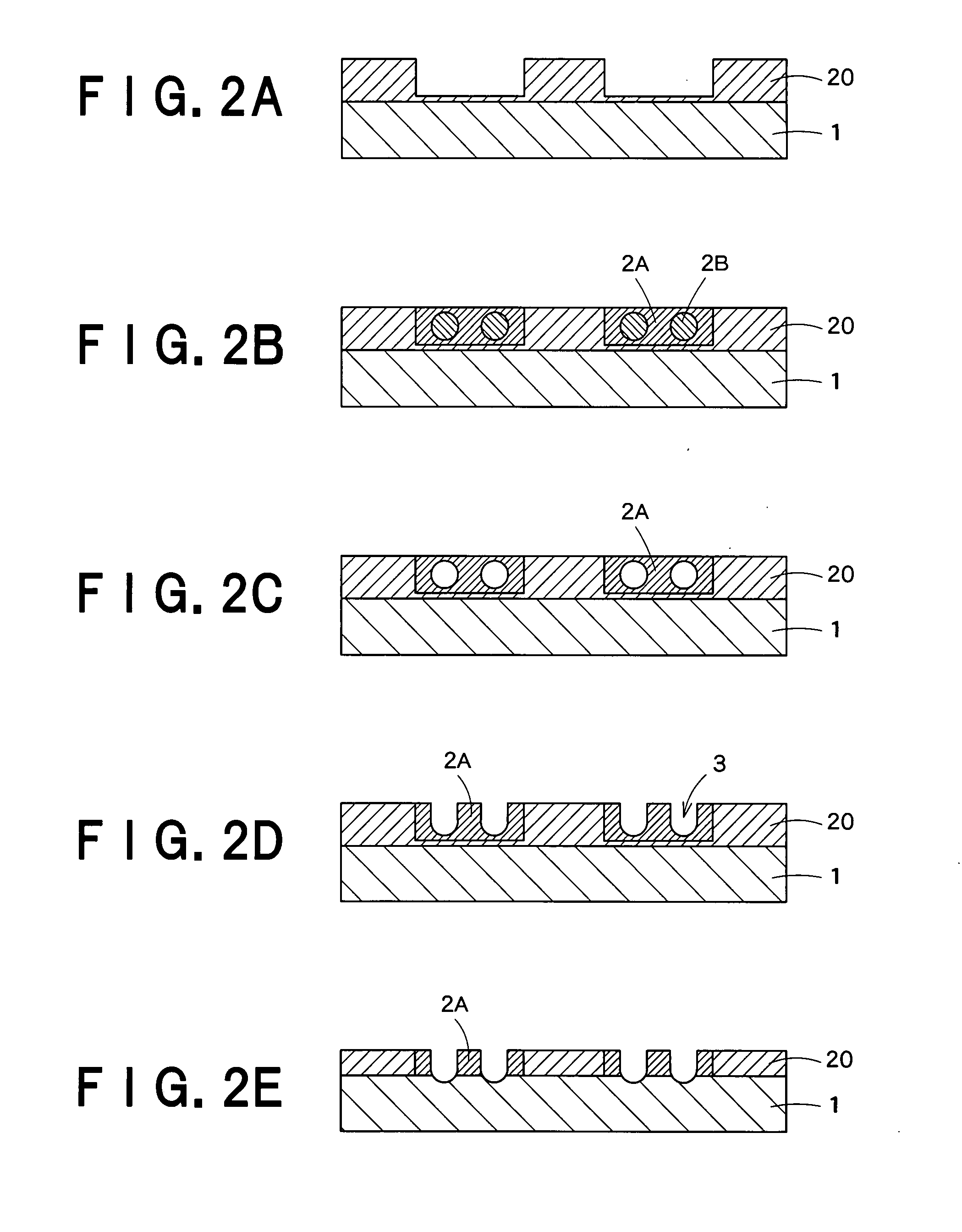Method for pattern formation
a pattern and pattern technology, applied in nanotechnology, nanotechnology, semiconductor devices, etc., can solve the problems of large fabrication throughput, high cost of lithography in manufacturing process, and difficulty in satisfactorily ensuring the etching resistance of the pattern formed as the mask, etc., to achieve high aspect ratio, simple process, and satisfactory etching resistance
- Summary
- Abstract
- Description
- Claims
- Application Information
AI Technical Summary
Benefits of technology
Problems solved by technology
Method used
Image
Examples
example 1
[0050]A diblock copolymer comprising polystyrene (PS) having a molecular weight of 9500 and polyethylene oxide (PEO) having a molecular weight of 9500 was dissolved in diglyme to prepare a 2.5% polymer solution for coating. 125 mg of T-7 (5500T) manufactured by Tokyo Ohka Kogyo Co., Ltd., which is a solution of a methylsiloxane derivative, was added to 250 mg of the polymer solution to give a homogeneous solution.
[0051]The homogeneous solution thus obtained was filtered through a membrane filter having a pore size of 0.5 μm and was coated onto a silicon wafer (a substrate) to a thickness of 30 nm. The coated substrate was placed in a nitrogen atmosphere oven, was heated to 400° C. at a temperature rise rate of 1.5° C. / min, and was held at the temperature for 2 hr.
[0052]The cross-section of the baked film thus obtained was observed under TEM. As a result, it was found that about 23 nm-pitch holes were formed. Next, etching with SF6 gas was carried out using the formed pattern as a ma...
example 2
[0053]A film having a microstructure was prepared in the same manner as in Example 1, except that a block copolymer comprising polystyrene (PS) having a molecular weight of 3800 and polyethylene oxide (PEO) having a molecular weight of 6500 was used instead of the block copolymer used in Example 1.
[0054]It was found that, in the baked film thus obtained, 15 nm-pitch holes were formed. In the same manner as in Example 1, the pattern was transferred to the underlying silicon substrate.
example 3
[0055]A film having a microstructure was prepared in the same manner as in Example 1, except that a block copolymer comprising polystyrene (PS) having a molecular weight of 3000 and polyethylene oxide (PEO) having a molecular weight of 3000 was used instead of the block copolymer used in Example 1.
[0056]It was found that, in the baked film thus obtained, 15 nm-pitch cylinders were formed. In the same manner as in Example 1, the pattern was transferred to the underlying silicon substrate.
PUM
| Property | Measurement | Unit |
|---|---|---|
| Affinity | aaaaa | aaaaa |
Abstract
Description
Claims
Application Information
 Login to View More
Login to View More - R&D
- Intellectual Property
- Life Sciences
- Materials
- Tech Scout
- Unparalleled Data Quality
- Higher Quality Content
- 60% Fewer Hallucinations
Browse by: Latest US Patents, China's latest patents, Technical Efficacy Thesaurus, Application Domain, Technology Topic, Popular Technical Reports.
© 2025 PatSnap. All rights reserved.Legal|Privacy policy|Modern Slavery Act Transparency Statement|Sitemap|About US| Contact US: help@patsnap.com



